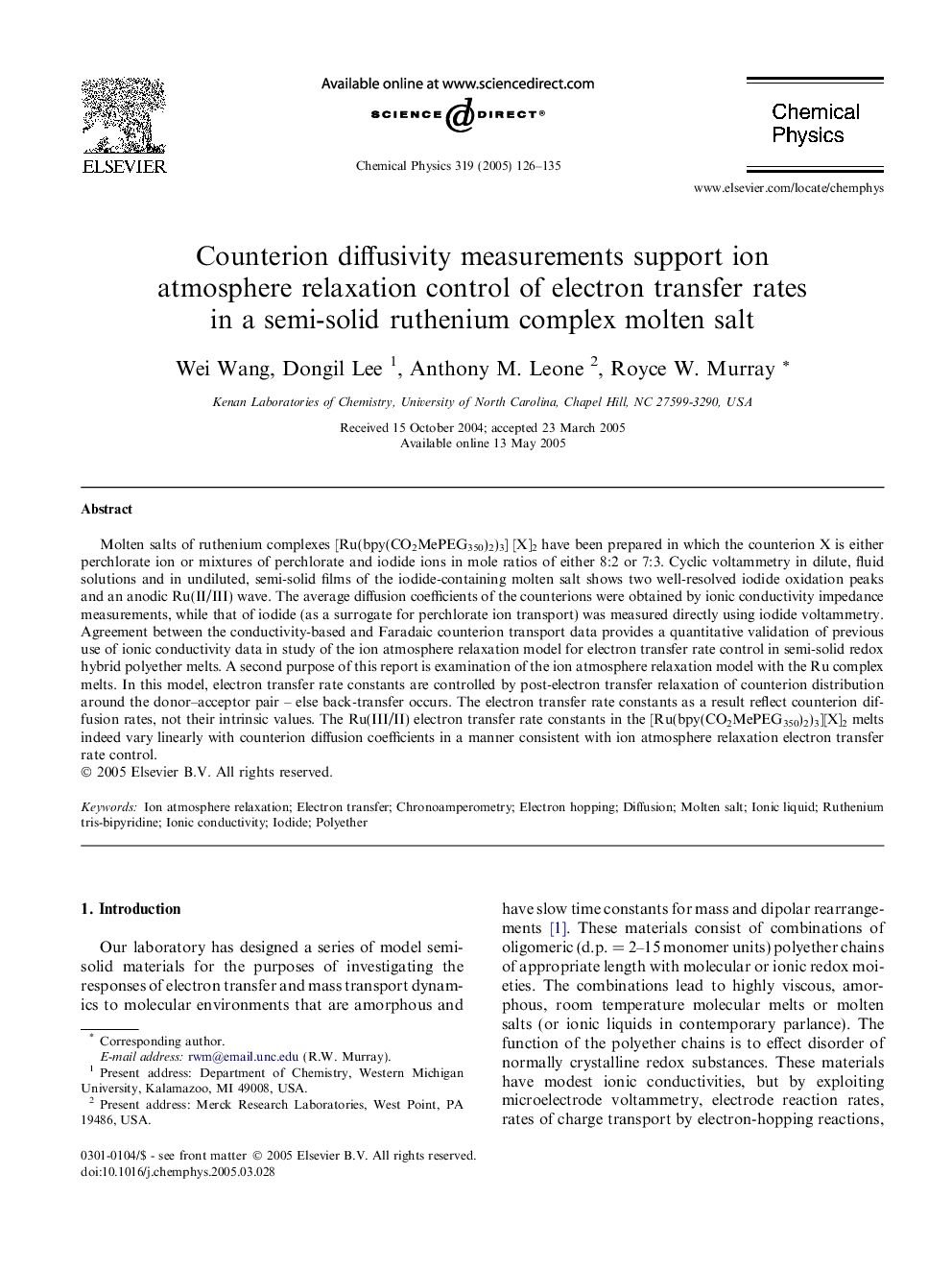| Article ID | Journal | Published Year | Pages | File Type |
|---|---|---|---|---|
| 9575142 | Chemical Physics | 2005 | 10 Pages |
Abstract
Molten salts of ruthenium complexes [Ru(bpy(CO2MePEG350)2)3] [X]2 have been prepared in which the counterion X is either perchlorate ion or mixtures of perchlorate and iodide ions in mole ratios of either 8:2 or 7:3. Cyclic voltammetry in dilute, fluid solutions and in undiluted, semi-solid films of the iodide-containing molten salt shows two well-resolved iodide oxidation peaks and an anodic Ru(II/III) wave. The average diffusion coefficients of the counterions were obtained by ionic conductivity impedance measurements, while that of iodide (as a surrogate for perchlorate ion transport) was measured directly using iodide voltammetry. Agreement between the conductivity-based and Faradaic counterion transport data provides a quantitative validation of previous use of ionic conductivity data in study of the ion atmosphere relaxation model for electron transfer rate control in semi-solid redox hybrid polyether melts. A second purpose of this report is examination of the ion atmosphere relaxation model with the Ru complex melts. In this model, electron transfer rate constants are controlled by post-electron transfer relaxation of counterion distribution around the donor-acceptor pair - else back-transfer occurs. The electron transfer rate constants as a result reflect counterion diffusion rates, not their intrinsic values. The Ru(III/II) electron transfer rate constants in the [Ru(bpy(CO2MePEG350)2)3][X]2 melts indeed vary linearly with counterion diffusion coefficients in a manner consistent with ion atmosphere relaxation electron transfer rate control.
Keywords
Related Topics
Physical Sciences and Engineering
Chemistry
Physical and Theoretical Chemistry
Authors
Wei Wang, Dongil Lee, Anthony M. Leone, Royce W. Murray,
